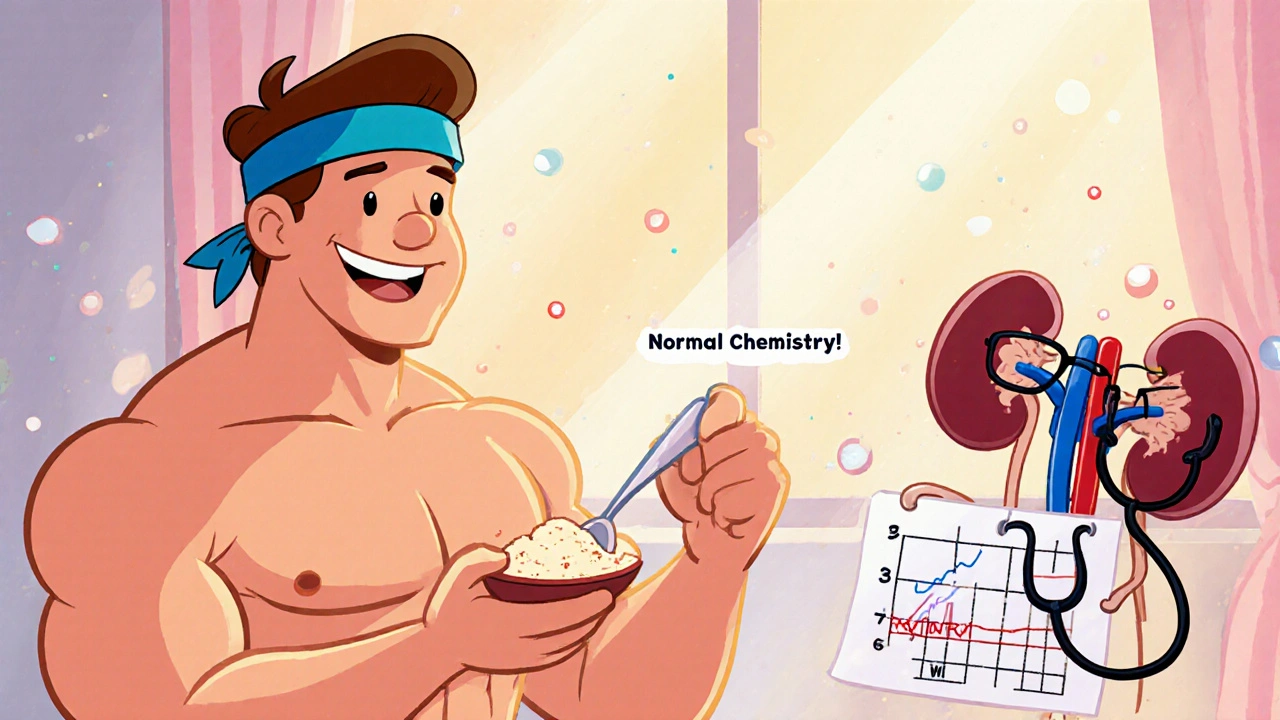Creatine: What It Is, How It Works, and What You Need to Know
When you hear creatine, a naturally occurring compound found in muscle cells that helps produce energy during heavy lifting or high-intensity exercise. Also known as phosphocreatine, it’s one of the few supplements backed by decades of solid science—not hype. Unlike trendy fat burners or miracle pills, creatine actually changes how your muscles produce energy. It’s not magic, but it’s close.
Most people use creatine to get stronger, lift heavier, or recover faster between sets. But it’s not just for bodybuilders. Athletes in soccer, sprinting, even combat sports use it. Your body makes creatine from amino acids, but you can also get it from red meat and fish. Still, most people don’t eat enough to reach the levels needed for peak performance—that’s where supplements come in. A standard dose is 3 to 5 grams a day. No loading phase needed. No crazy cycles. Just consistent use.
What you might not know is how creatine connects to other things you care about. It doesn’t just help with muscle growth—it supports brain function, may reduce fatigue in older adults, and even helps with recovery after injury. It’s also safe for long-term use when taken properly. Studies show no harm to kidneys or liver in healthy people. That’s not true for every supplement out there.
But creatine isn’t a free pass to skip training. It doesn’t replace protein, sleep, or good nutrition. Think of it like a battery charger for your muscles. Plug it in, and your muscles work harder before they tire out. That means more reps, more progress, more gains over time. It’s simple. It’s effective. And it’s been tested on thousands of people.
Some worry about bloating or water retention. That’s real—but it’s mostly in the first week, and it’s not fat. Your muscles hold onto more water, which can make them look fuller. That’s why some athletes prefer to avoid it before competitions. Others love the look. Either way, it’s temporary and harmless.
There’s a lot of noise online about which form of creatine is best. Creatine monohydrate is still the gold standard. Everything else—hydrochloride, nitrate, buffered—costs more and doesn’t do more. Stick with the basic version. It’s cheap, proven, and works.
So if you’re thinking about trying creatine, here’s the deal: if you lift weights, run sprints, or want to get stronger without fancy gear or pills, this is one of the few things you can actually trust. It’s not a cure-all. But for what it does, nothing else comes close.
Below, you’ll find real-world advice on using creatine safely, how it interacts with other supplements, what to expect when you start, and what to watch out for. No fluff. Just facts from people who’ve been there.

